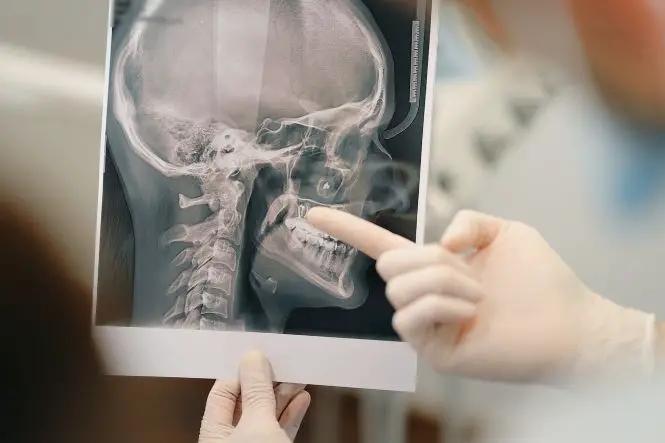Forensic Dentistry is the area of forensic medicine concerned with the examination of teeth, especially in the cases of victims who cannot be identified by conventional means or when an attacker bites a victim and leaves bite marks behind.
Forensic dentistry seeks to help the police and other law enforcement authorities with cutting edge techniques in order to make identifications based upon the uniqueness of both teeth and the marks they leave behind when they are used to bite another human being.
Dentistry as Evidence
Using specific highly technical procedures a forensic dentist can provide accurate estimates as to the age of a victim, when they died and can also take DNA samples from the teeth for use in the identification process. As teeth are one of the only things remaining when a body decomposes they are useful for extrapolating DNA samples along with bone marrow and hair.
Forensic dentistry can also be used to determine whether or not a bite mark has been made by natural or synthetic teeth (dentures) and as we have already mentioned each bite mark is different from person to person.
Bite marks, like fingerprints, are unique and a forensic dentist will be able to make a cast or take pictures of the bite marks (which bruise in the same way as a wound caused by blunt force trauma or the result of a tightly held grip) to use later on as a means of comparing results.
A human bite mark will often be elliptical or circular in formation and will display the specific characteristics of the teeth that have been used to make the mark. Likewise a bite mark will can be U-shaped in appearance with a space in between to show where the biter has opened their mouth to a width necessary to get their teeth around a wrist or an arm.
The mistreatment of teeth also has a large part to play in the identification of bite marks. Missing teeth, fractures or malformed teeth all bear their own unique characteristics and these show when a bite mark is examined. As do the position of the incisors within the biter’s mouth and whether or not these incisors – which appear as triangular shaped wounds or marks on the skin of the person who has been bitten – are in good order.
It is possible that – given enough force in the jaw of the person doing the biting – that the skin can be penetrated and in addition to leaving bruises they can leave cuts that, when swabbed, can contain saliva, which can in itself be used as a means of identification through DNA testing.
It is also important to note that bite marks can be taken not just from the skin of a victim but also from items found at a crime scene. For example a half eaten apple will provide the forensic scientists – or Scenes of Crime Officer – with a usable impression of a possible assailant’s mouth: and likewise if someone were to – say – chew on the end of a pencil or matchstick. Bite marks can be used to stunning effect in the pursuit of an assailant and these bite marks – as we have already said – can also provide saliva that can provide usable DNA samples which help making the identification of a suspect that much easier.
When examining teeth in order to make the comparison between bite mark and origin of bite mark a clinical examination may take place. This examination can only be undertaken providing the suspect gives his or her consent.


